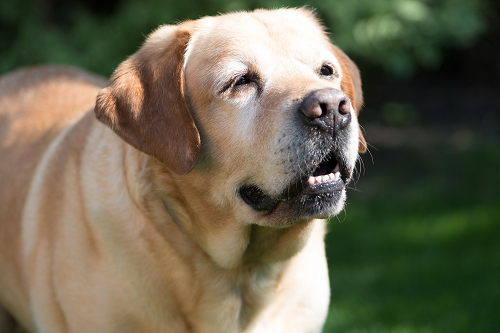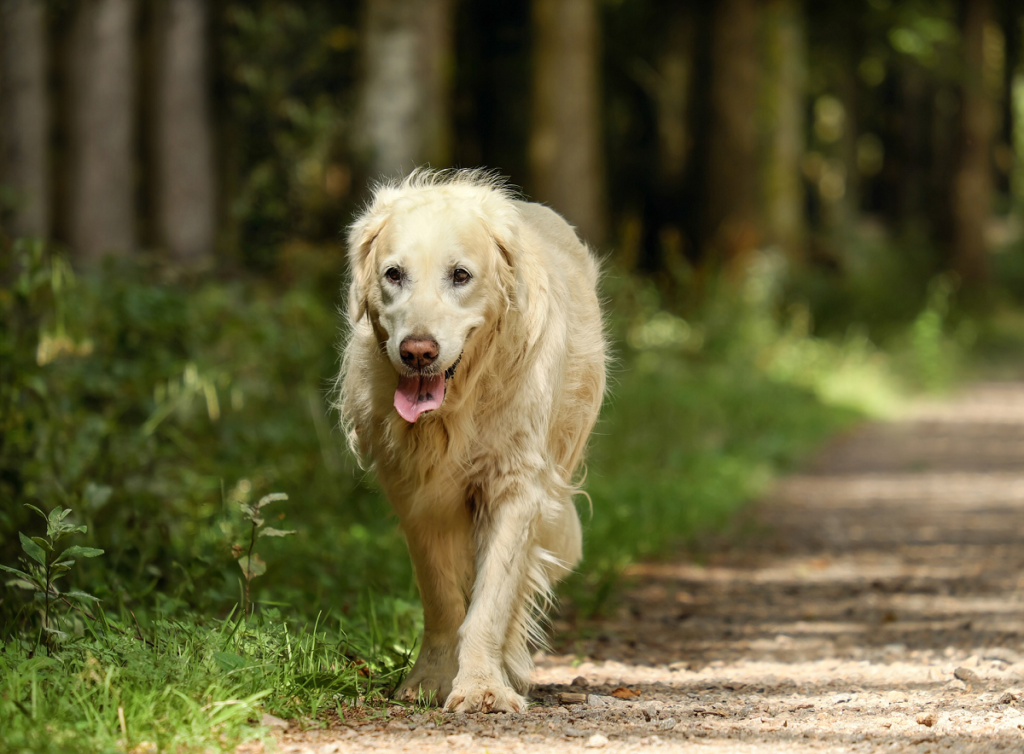Maybe the hair around your dog’s snout is changing color, or perhaps he is a little slower than he used to be. The signs are there that your dog is aging. Getting older and facing the symptoms of aging is all apart of dog ownership. Although it may be difficult for a loving owners to witness their furry companion slowing down, just remember it’s natural and will happen to all canines at some point in their lives. One common ailment that often goes hand in hand with dog aging is vestibular disease.
What Is Vestibular Disease?
Canine idiopathic vestibular disease, commonly referred to as “old dog syndrome,” is a condition where a dog’s balance becomes affected due to problems within the inner ear.
The vestibulocochlear nerve is the biological epicenter which regulates head position and balance. Vestibular disease in older dogs is a condition wherein the nerve becomes inflamed, resulting in the brain’s inability to process information about balance and head position. While the disease is more common in older dogs, this syndrome can affect canines of all ages.
Is Vestibular Disease in Dogs Serious?
Even though it may sound serious, vestibular disease is treatable and often results in a full recovery. Dogs can usually recover within  one to three weeks, depending on how severe their individual case is and how the inflammation has affected them.
one to three weeks, depending on how severe their individual case is and how the inflammation has affected them.
What Causes Vestibular Disease?
The underlying causes of Vestibular disease are unknown as inflammation can occur from a multitude of reasons and without warning. Most commonly, Vestibular disease is the result of an inner ear infection though other root causes can be more severe in nature.
One of the unfortunate possibilities when treating vestibular disease is uncovering a more severe issue like a canine brain tumor, though these cases are rare. Much like dog vertigo, vestibular disease comes on rapidly and can dissipate just as quickly.
What Are the Symptoms of Vestibular Disease in Older Dogs?
The classic symptoms of old dog syndrome include stumbling and wobbling, a significant head tilt, and turning in circles or rolling on the ground. Because the disease affects balance and coordination, canine vomiting and the inability/unwillingness to walk are also common symptoms of the disease.
How is it Diagnosed?
To correctly diagnose the disease, it is crucial to take your dog to the Vet for an exam. Even if all symptoms point to vestibular disease, your vet will need to perform a blood sample and a urinalysis to compare with your dog’s prior medical exams.
To be thorough, your vet may take an x-ray to ensure that the dizziness is not caused by a more serious condition like a brain tumor. Once a more dire prognosis has been ruled out, and the diagnosis of vestibular disease has been reached, your vet will suggest a treatment plan for your four-legged companion.
Vestibular Disease in Dogs Treatment
Unless your dog has become severely dehydrated due to prolonged exposure to vestibular disease, the disease can be treated at  home. If dehydration does occur, intravenous fluids will be administered and your dog may require short-term hospitalization and observation.
home. If dehydration does occur, intravenous fluids will be administered and your dog may require short-term hospitalization and observation.
Several medications can be given to assist with the symptoms of vestibular disease like anti-nausea medication to combat dizziness, and cortical steroids to help fight canine inflammation. If the syndrome was brought on by an inner ear infection, then antibiotics will be administered.
In most cases, the inflammation of the inner ear that causes vestibular disease goes undiagnosed. In these situations, vestibular disease may go away on its own within a few days. Though medical intervention is required to diagnose this condition, treatment for the syndrome itself, simply requires time.
What Can I Do to Speed Up the Recovery Process?
Like with all conditions, it is highly suggested to talk to your vet to learn more about vestibular treatment for dogs. Unfortunately, there is nothing you can do to speed up recovery, but there are some things you can do to make your dog more comfortable during this confusing time:
- Create a soft, comfortable environment where your dog can lay with his head propped up.
- Keep water and food nearby as walking will be a challenge.
- Try to keep him contained to one room.
- Be extra affectionate to calm his nerves.
Though it may be tempting, do not carry your dog when he is suffering from vestibular disease as it can shake the inner ear and make the condition worse.
Life After Vestibular Disease
In most cases, dogs who once suffered from Vestibular disease return to a healthy life after successful treatment. In some rare cases, depending on the severity of the disease, a mild wobble or semi-permanent head tilt may be present for an extended period.
As with all medical conditions regarding your pet, getting him to the vet as soon as possible is always the best course of action. By being proactive and taking your dog in at the onset of symptoms, you’ll be able to provide your pup with the best care possible.
Sources:
PetMD. (2016, October 11). Vestibular Disease in Dogs. Retrieved from https://www.petmd.com/dog/conditions/neurological/vestibular-disease-dogs
Vestibular Disease in Dogs. (n.d.). Retrieved from https://vcahospitals.com/know-your-pet/vestibular-disease-in-dogs
Old Dog Syndrome: Vestibular Disease in Dogs: Hill’s Pet. (n.d.). Retrieved from https://www.hillspet.com/dog-care/healthcare/old-dog-syndrome-and-vestibular-disease
Vertigo: Causes, Symptoms & Treatment. (n.d.). Retrieved from https://archive.org/stream/journalofarkansa9011arka/journalofarkansa9011arka_djvu.txt
Vestibular Neuritis. (n.d.). Retrieved from https://my.clevelandclinic.org/health/diseases/15227-vestibular-neuritis




